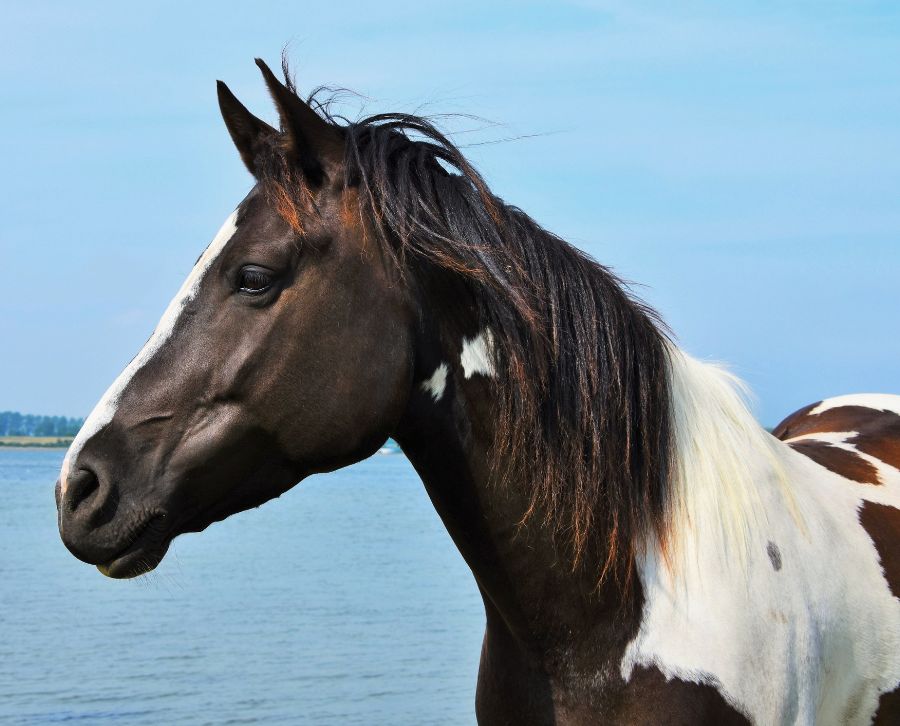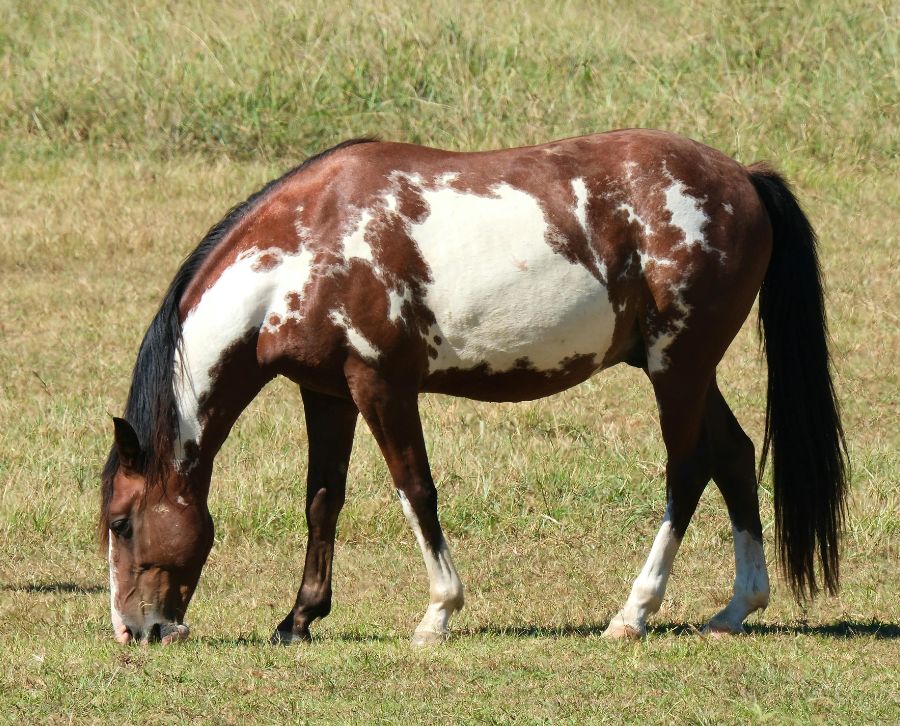
Origin and history of the pinto horse
The Pinto horse originated in North America in the 16th century, when the first Spanish arrived in the area, led by Hernán Cortés. They brought the Spanish Barb, a crossbreed of other breeds present in Europe (primarily Russian and Arabian). These new horses began to mix with American wild horses, giving rise to the Pinto horse we know today, although its recognition as a breed did not occur until centuries later.
The crossing of so many different breeds was what gave rise to the curious patterns of their fur.
It was in 1930 that interest began to be expressed in breeding these horses, with the aim of improving their color and physical qualities. Thus, some riders who loved these horses founded the Pinto Horse Society with the aim of breeding superior horses. Today, this association is known as the Pinto Horse Association of America (PtHA), whose purpose is to ensure the preservation of American Pintos.
However, this breed was not officially recognized as such until the 1960s, when several American associations, such as the PtHA, decided to classify it as a breed and not a cross between several.
The Pinto Horse in Native American Cultures
Physical characteristics of the Pinto Horse
The American Paint horse is easily recognizable due to its unique physical characteristics, including its great speed and endurance.
Coat types: tobiano and overo
- Tobiano: The back and tail are lighter in fur, while the belly area is darker.
- Overo: presentan un pelaje oscuro en la mayor parte de su cuerpOvero: They have dark fur on most of their body, except on the belly and head, where white spots appear.
Existen otras consideraciones como el Pinto Tovero, caracteriThere are other breeds, such as the Pinto Tovero, characterized by its dark markings around its ears and even its forehead. Its face and chest also feature dark markings surrounded by white.
Size and constitution
The American Paint is considered a robust animal, its main physical attributes are:
- Height and weight: The height at the withers ranges between 1.50 and 1.60 meters. The dog weighs approximately 495 kg.
- Head: Rather small and generally flattened. The muzzle is also small and usually has large nostrils. The expressive eyes, almost always light-colored, are particularly notable.
- Body: The neck is long and elegant, ending in strong shoulders. The front legs are usually short, but strong.
Differences between piebald and pinto horses
Often, the coat of these horses is found in other breeds, which can lead to confusion. That’s why we’re going to present some differences between piebald and pinto horses.
Definition of piebald horse
In some places, a piebald horse is considered to be one with white and brown markings. However, in some areas, a piebald horse is considered to be one with a dark base and predominant color, with white markings appearing on top.
Definition of pinto horse
In some areas, the pinto horse is considered to be a black and white horse. However, unlike the piebald, it is also considered to be a horse whose main color is white and whose markings are dark.
The Pinto Mustang Horse
Mustang horses are descendants of the Spanish conquistadors’ horses that were freed or escaped, and were able to adapt to their new environment, becoming wild animals to this day. Thus, the Pinto Mustang horse is the descendant of these early European horses found free in the wild and with a spotted coat.
Distinctive features of the Mustang Pinto
Although these horses may appear to be identical to American Paint horses, there are actually some physical characteristics that differentiate them, as they are generally smaller. Their height ranges between 140 and 150 centimeters at the withers, while their weight ranges between 320 and 450 kg.
Characteristics of the American Paint Horse
It’s not just their physical characteristics that distinguish this animal; their character and temperament must also be considered. Next, we’ll discuss the Pinto horse and its behavioral characteristics.
Temperament and behavior in horse riding
It is considered a warm-blooded animal, due to the various crossbreedings throughout its history. It is also considered a highly intelligent animal, with a calm and friendly character.
In general, they are considered a docile breed and very easy to learn, making them easy to domesticate.
As for equine sports, their docile nature makes them ideal for beginners in horse riding. These horses excel in show jumping and dressage. They are also excellent draft horses.
Current uses and applications
Today, due to their strength and endurance, it’s very common to see Pinto horses performing physical labor. They’re considered good rodeo horses, so they’re often used to guard herds of cattle or sheep.
Frequently Asked Questions About the Pinto Horse
How long does a Pinto horse live? The life expectancy of these horses ranges between 20 and 25 years, although with good care and regular veterinary visits, this can extend to 30 and 35 years.
What is their current conservation status? These horses are considered a breeding breed, so they are not endangered. Breeders are diverse, and they can be found throughout the United States.
The Pinto horse, a unique breed
As you’ve seen, the Pinto horse is a very interesting breed, especially present in North American history. Furthermore, they are closely related to other horse breeds due to their similar or shared coat.
Have you heard of the Pinto horse? Do you want to learn more about horses and other breeds? At Equspaddock, we love sharing new information about our passion with you. Visit us for more information.




